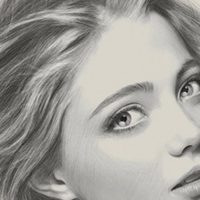Blepharoplasty and Asian Eyelids
Natural Result, Natural Scars, Natural Rejuvenation for Blepharoplasty.
Call Now
646-725-8447

As we get older, the upper and lower eyelid skin loses its elasticity and creates a more tired look. The orbital septum, which supports the eyelid fat, also weakens and this causes the upper and/or lower eyelids to balloon out. Usually, this is seen in the mid to late 40’s but can happen in the mid to late 30’s.
Not only does the skin loosen around your eyes but your face as well. You are losing volume in your cheeks and there is descent of the cheeks and lower face that creates the jowls. Your neck line is less defined. All of these changes are occurring at the same time, so that is why it is common to perform a face and neck lift with blepharoplasty at the same time.
There are times when non-surgical treatments, such as Botox and fillers, can do enough to correct a facial aging problem. However, if Botox and fillers are the only tools you have without surgical options, then an overuse of Botox and fillers may lead to a bad outcome. If a salad dressing needs a bit of olive oil but you only have sugar, does adding sugar make the salad better or worse?
Even if you only think your eyelids are the problem, it is important for you to get a comprehensive evaluation of you entire face. Oftentimes, it is rather difficult to exactly identify the different problems of an aging face and come up with the right options for changing them. This is why finding a board certified plastic surgeon is important. The understanding of the facial anatomy, from the skin to the soft tissue and muscle to the bony anatomy, is critical to knowing what needs to change and how to do it.
UPPER EYELID
The upper eyelid blepharoplasty involves surgically remove excess skin of the upper eyelid, a strip of the orbicularis oculi muscle, and then the underlying fat that protrudes out due to lack of support. This operation can be performed under local anesthesia or under sedation.
ASIAN UPPER EYELID
Asian upper eyelids are very different from the Caucasian upper eyelid. The upper eyelid fold may be hidden or not be present at all or is shaped differently. Therefore, the surgical design and technique are tailored to creating a balance of improving eyelid shape without creating a distortion by trying to westernize the eyelids. The location and shape of the upper eyelid fold is created by an understanding of the anatomy of the Asian eyelid. Creating an aesthetic natural shape requires surgical finesse and skill because the margin of error is very little. That is why the operation is performed under local anesthesia so that the way the crease folds during the operation can be determined. With proper local anesthesia, there will be no discomfort during the operation.
LOWER EYELID
The lower eyelid blepharoplasty is different from the upper eyelid blepharoplasty. The main goal of lower eyelid blepharoplasty is to remove the bulging fat and create a smooth transition to the cheek, known as the tear trough. This can be done with an incision through the skin, when a small strip of redundant skin needs to be excised. When there is no need for skin excision, then a transconjunctival approach from inside the eyelid is the better option because no external scar will be created.
The tear trough is another important area that is oftentimes poorly corrected. If needed, we can drape the fat from the lower eyelid and fill in the tear trough area to help improve the tear trough shape. This is very different than filling in the tear trough area with fillers. Too many doctors try to fill in the tear trough with fat grafting and fillers without doing the blepharoplasty, which oftentimes create a swollen distorted appearance of the face. This is one of the reasons many well known actors start to look strange and funny.
PTOSIS
Oftentimes, ptosis of the upper eyelid(s) causes problems with the shape and appearance of the eye(s). Ptosis of the upper eyelid is when the upper eyelid is in lower position than normal because the levator muscle does not elevate the eyelid normally. Ptosis may be on one side, which causes asymmetry, or on both sides. The brow position also needs to be assessed, since the position of the brow affects the position and shape of the upper eyelid. Therefore, a brow lift may be needed in concert with correcting the droopy (ptotic) upper eyelid. Mild upper eyelid ptosis can be corrected with a blepharoplasty. More severe forms of ptosis may require a frontalis sling. A proper evaluation is needed to determine what may be the most appropriate treatment.
The Natural Look
The Natural Look can only be achieved with a proper understanding of the facial anatomy and a treatment algorithm that is used to target each different problem in a harmonious way. Dr. Kim is a board certified plastic surgeon, who has developed a thoughtful algorithm to treat facial aging around the eyes and the entire face with nonsurgical techniques, such as Botox and fillers, and surgical techniques. Dr. Kim serves the Manhattan communities of West Village, Greenwich Village, Soho, Gramercy, Union Square, East Village, Lower East Side, Tribeca, Bronx, Brooklyn, Queens, Long Island, Staten Island, as well as Westchester county and Greenwich, CT.